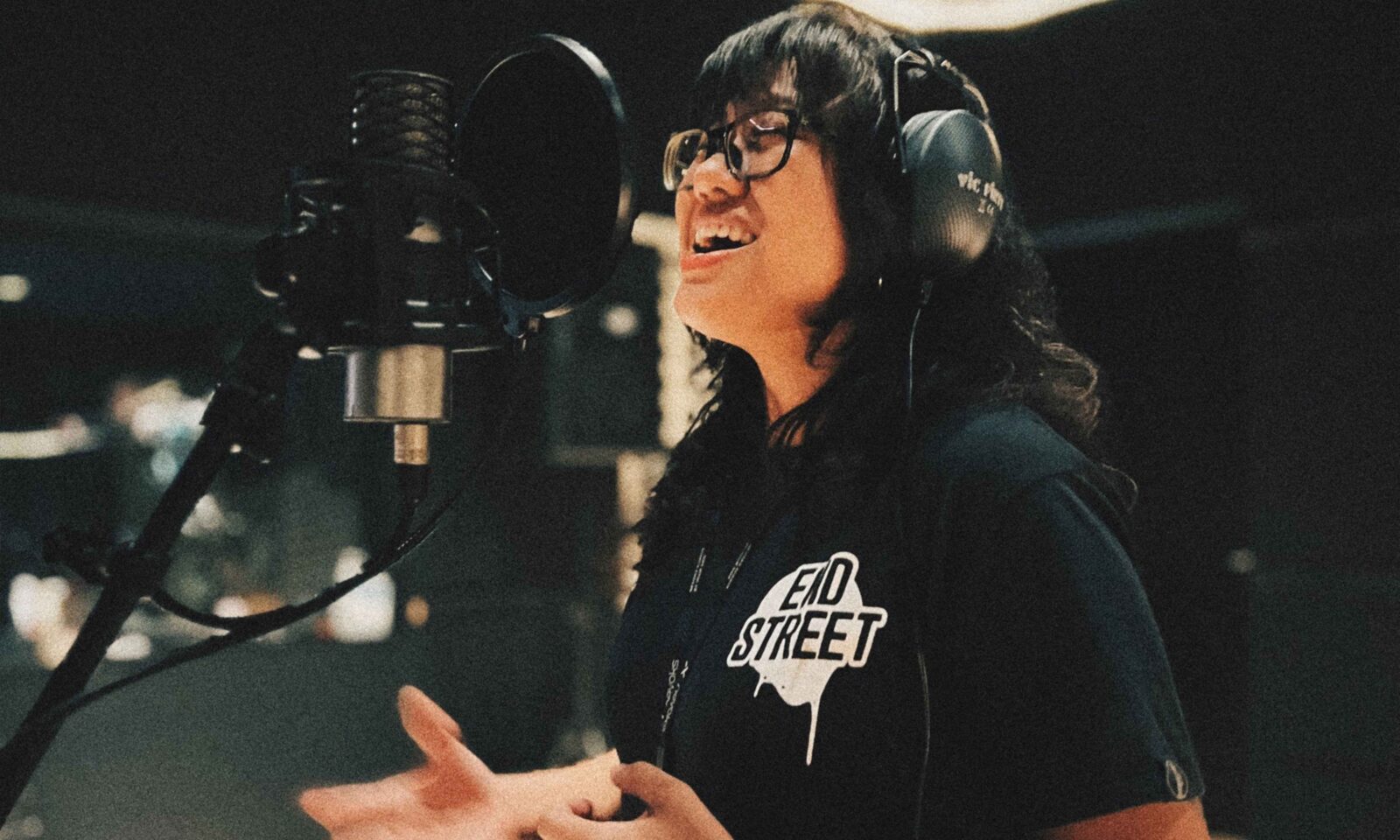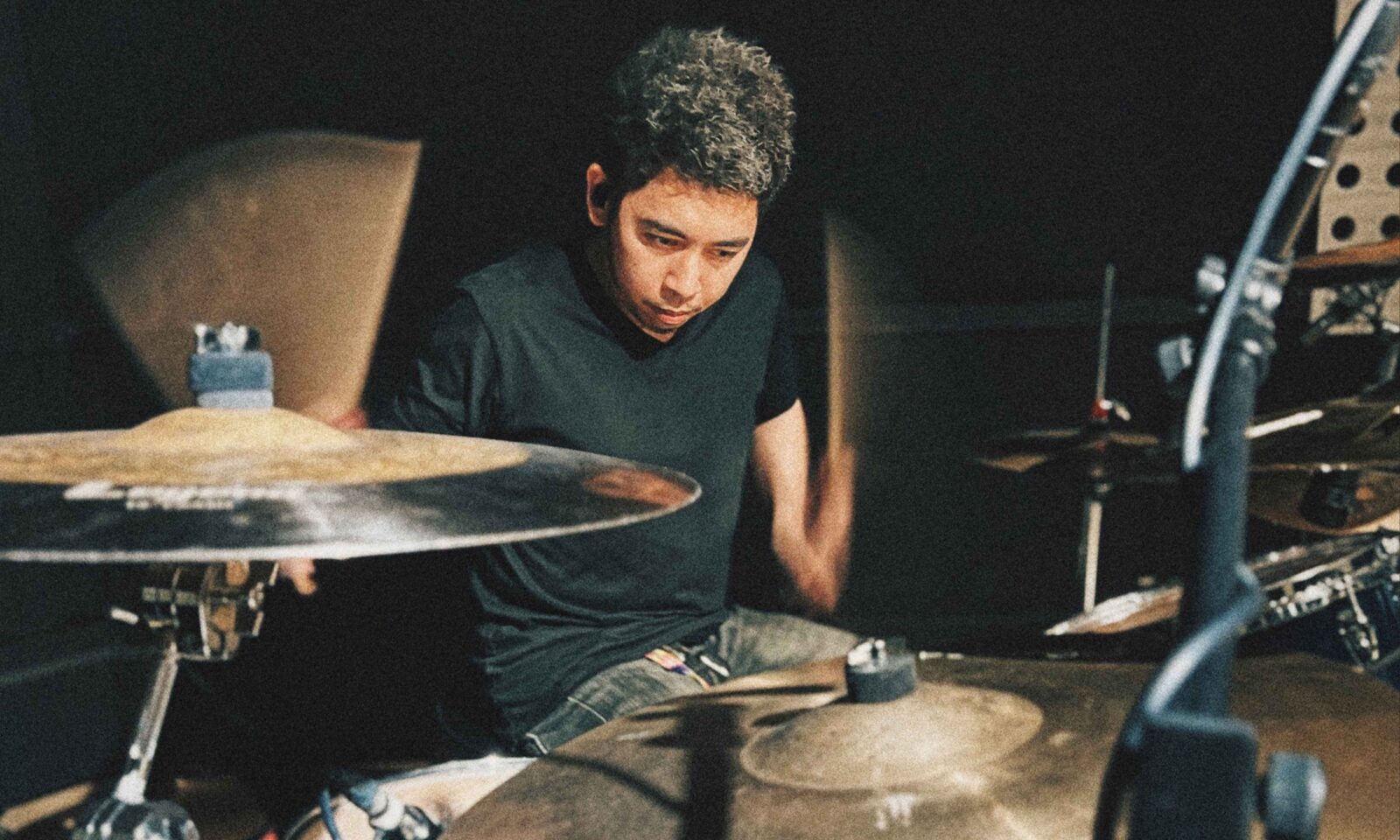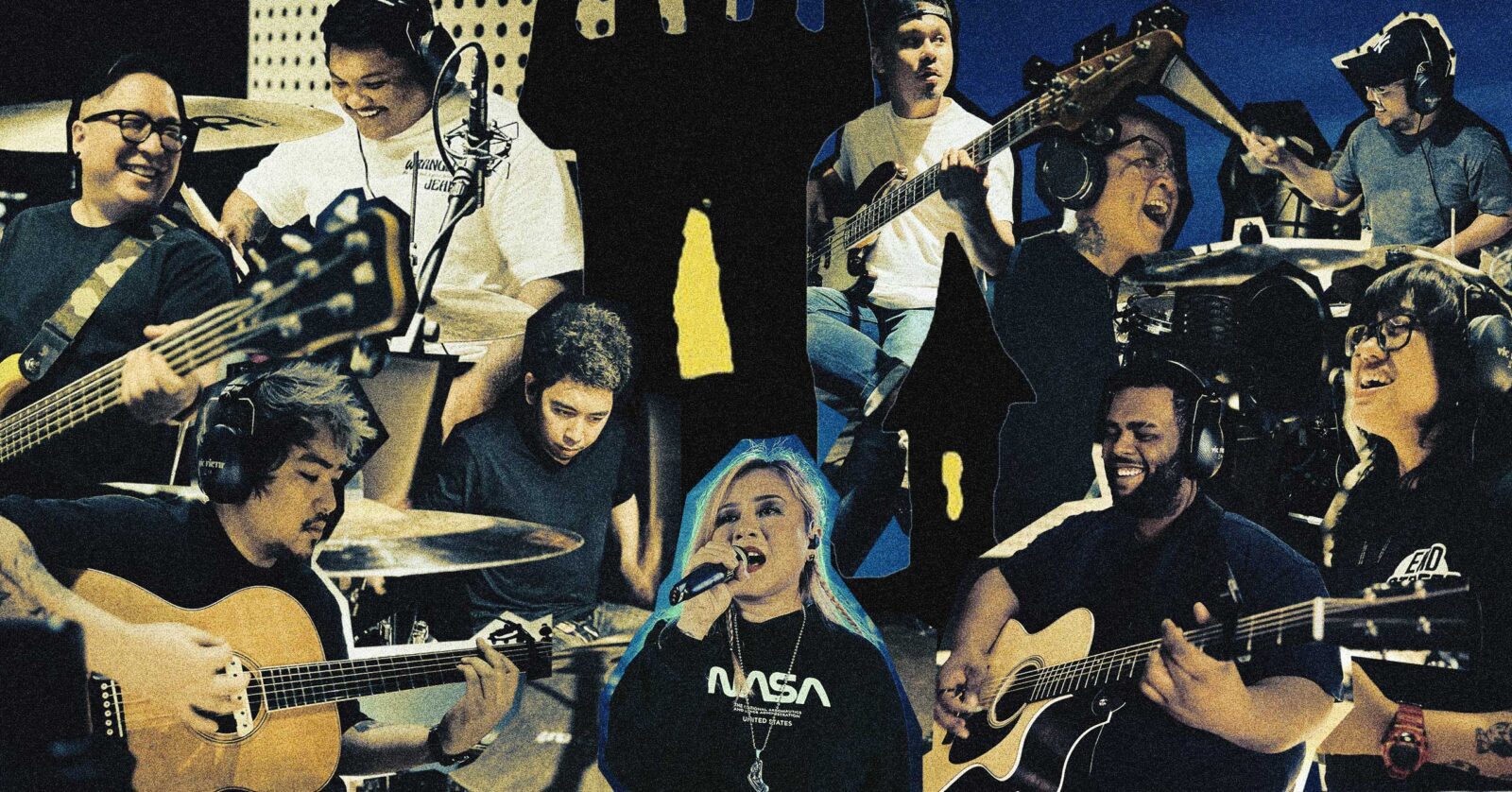Since 2003, Tower of Doom Records has stood as an emerging powerhouse in the Filipino rock music scene. Some would describe its presence as a testament to the resilience and creativity of independent labels –– which was most likely the intention of its inception from musicians Eric Perlas and Macoy Manuel. With the studio being born out of a shared passion for fostering the local rock community, Tower of Doom Records has quickly evolved from a modest recording space into a multifaceted hub for musicians, embracing a DIY ethos that has become synonymous with the Filipino rock spirit.

Courtesy of @towerofdoom.
Its mission throughout the years has been focused on an unwavering commitment to supporting emerging and established artists alike, allowing for a platform that champions diverse musical expressions within the rock genre, which can break away from mainstream constraints. In an industry that is often dominated by major labels, Tower of Doom Records champions independence, giving artists the freedom to explore their unique sound and reach audiences organically. With an impressive roster of bands under its banner, Tower of Doom continues to be a driving force, empowering musicians and shaping the future of Filipino rock music.
In an exclusive interview, Billboard Philippines talks to Carlo Perlas, the studio’s executive producer, about their humble beginnings, their ethos as a label, and what makes them stand out from other traditional record labels –– showing their drive as a cultural catalyst that fosters a community where artists thrive and the spirit of Filipino rock resounds.

Courtesy of @towerofdoom.
Billboard Philippines: How did the idea for Tower of Doom Records come about, and what motivated the establishment of a recording studio in 2002?
Carlo Perlas: Tower of Doom was founded as kind of a spin-off from Eric’s college thesis. The thesis explored whether or not digital home audio recording was a viable career path in the early 2000s, and the conclusion was basically “no,” haha! But while putting that thesis together, Eric found a love for music recording, and he decided to pursue it by any means possible. This was in an era before YouTube and endless online resources, so information was just much harder to find at the time. Since he was playing in a band himself (COG), and his friends were all active in the music scene, Tower of Doom began with that small group of artists–recording and producing music for independent rock and metal bands. That helped Eric learn the ins and outs of audio production, and that was the foundation that our company was built on.

Courtesy of @towerofdoom.
Can you share some insights into the early days of Tower of Doom when it was a home-based digital recording studio? What were the challenges and successes during that period?
The early days were just about as low-tech as you can imagine. From putting mattresses up against the wall to dampen room ambiance, to recording vocals in the bathroom for that extra special “toilet-verb,” Eric tried tons of rumored tricks and hacks that were available to a college student. The unit he was living in wasn’t even big enough for more than a couple of people, let alone an entire drum set or recording facility. So a lot of those earlier projects were recorded anywhere and everywhere — random rehearsal spaces, basements, living rooms, bedrooms, dining rooms, and more. Laptops were also super expensive and were much weaker, so every time Eric recorded a band, he’d have to lug a huge tower PC and CRT monitor to their place haha!
There was no shortage of challenges. Audio engineering is an incredibly difficult field, and for the longest time, it was almost impossible to find good technical advice, so a lot of things had to be learned the hard way. Also, music recording has always been a little underserved as an industry, so making enough money to pay the bills and call it a real business during those early years was a huge challenge.
But those challenging years were also super important to the company’s formation. Eric got to meet all of the bands who would eventually form Tower of Doom’s initial artist roster, including bands like Valley of Chrome and Sin, whose drummer (Macoy Manuel) would eventually become one of our senior audio engineers.

Courtesy of @towerofdoom.
The studio underwent a significant transition in 2005 when it moved to a formal recording facility in Teachers Village, Quezon City. What prompted this move, and how did it impact the growth and development of Tower of Doom?
2005 was basically the year that we tried to take the business more seriously. Our dad’s bandmate had a spare room behind their sari-sari store (shoutout to Manoy Store), and we were able to set up a humble 1-room studio there. It was a big gamble, as getting the proper equipment and acoustic treatments was super expensive, but thankfully it paid off.
We were getting more and more opportunities to work with all sorts of artists around the country, and bigger projects started coming through our doors. There were more bands from different genres, like R&B, reggae, EDM, hip-hop and pop music, as well as established artists like Noel Cabangon, Lolita Carbon, Jerome Abalos and many more. Dicta License was Eric’s first major label project with Warner Music Philippines, and many more major labels followed, like MCA Universal, Alpha, Ivory, and Universal Records.
The guys from Chicosci were always good friends of ours and that gave us the chance to record their infamous “white” album, and many more of their other releases. Ocho Toleran (guitarist of Queso) was always super supportive of Tower of Doom, and he helped bring his own band as well as some of Richard Tan’s Backbeat Management roster into the studio. We got to meet and eventually record huge local rock artists like Moonstar88, Franco, and Kamikazee, and that led to even more opportunities working with great bands like Urbandub, Typecast, Rivermaya, Parokya ni Edgar, and many more.
It was also in that small studio that we decided to take the next step and grow the company from a recording studio into an independent label. That’s where we recorded and signed our first official TOD artists, and where we planned and launched the Siege Tours in 2007 and 2008 that helped us take our artists across Luzon and Visayas.

Courtesy of @towerofdoom.
Tower of Doom Records has been associated with numerous independent groups and major labels. How do you balance working with both types of artists, and what unique contributions do you believe Tower of Doom brings to the Filipino music scene?
Despite our ‘scary’ name which makes people think we only work with rock bands, Tower has always been super open to all genres of music. It’s been great getting to work with professional, established acts as well as brand new artists of all genres and to see the different ways people look at music. A common misconception is that the bigger the band, the bigger the ego, but that’s definitely not the case! Maybe we’ve just been lucky, but most of the bands that come into Tower are usually super friendly and hardworking people and working with them is always a pleasure.
Our main mindset is that when people get into the studio, we try to create a safe space for them to try out ideas, while also giving them honest feedback on what’s working and what isn’t. With that mindset, it hasn’t really been hard to deal with different types of clients since we try to give everyone the same level of focus and service.
In terms of what is unique about Tower, it’s probably our obsession with the technical aspects of recording. With today’s tech, so much is possible in audio production, but there’s still a certain magic to recording live instruments that sometimes gets lost when too many things are automated and templated. And all of our audio guys here at Tower study and work every day to find that nice balance between live musicianship and using the latest tech to polish the end product.

Courtesy of @towerofdoom.
In the years since its inception, Tower of Doom has become synonymous with professional, international-quality recordings. Can you elaborate on the studio’s approach to maintaining such high standards, especially when working with diverse artists and musical genres?
Thank you very much, that’s a huge compliment and we appreciate it! Tower is basically full of career autodidacts. We all have our focus and specialties and we all nerd out big time, which leads to a company-wide obsession with learning new things and trying out new techniques. We’re always doing our best to improve ourselves with every new project and that in itself is a huge motivator for us.
Another big thing that most people don’t know is how collaborative we are. Even though each project has a main producer/engineer, internally we always listen to each other’s outputs and share honest feedback. It’s easy for audio engineers to fall victim to their biases — making things sound a certain way, or subconsciously working in personal influences. But with a more collaborative approach, we call each other out on those types of things, and we always try to bring the mindset back to “what is best for the project.”

Courtesy of @towerofdoom.
How has the Filipino rock scene evolved over the years, and in what ways has Tower of Doom Records played a role in shaping or reflecting these changes?
The music scene always goes through cycles and waves. We’ve been doing this for about 20 years at this point, and through that time we’ve seen lots of genres rise to prominence, from the big rock/emo trends back in the day to the rise of hip-hop, to the surge of singer-songwriters and K-pop. Right now rock isn’t as popular as it used to be, but that is also in line with global trends. It most likely has a lot to do with the empowerment of bedroom musicians – technology makes it much easier to produce your own musical ideas, and you don’t even need to look for bandmates anymore. So if there is a global rise in solo artists, and if hip-hop and singer-songwriter genres are a more natural fit for those solo artists, then that might be part of the reason why there has been an explosion of talent in those genres recently.
But like we said earlier, everything always seems to have waves and cycles. In a few years, people might get tired of what’s popular now, and there might be a return to rock, metal, or other genres that aren’t in the limelight now. As far as Tower is concerned, we just love celebrating music in all its forms, and if our efforts with Filipino artists or with Tower Sessions have inspired people to start their own bands and rock out, then that’s a huge reward for us already.

Courtesy of @towerofdoom.
The Tower of Doom company is described as providing practical recording and music marketing solutions. Could you share some examples of these solutions and how they empower independent Filipino artists?
The main thing people need to understand with music marketing is that the song itself is only part of the equation. Growing up we all used to believe that all we needed was one hit song, one banger, and we could change lives. But the reality is, that success in music usually comes from a huge variety of factors because audiences expect everything these days. Thanks to technology, we’re all just too spoiled for choice!
It’s not enough to have a song on the radio. You need a music video, a lyric video, a live performance, an active gig schedule, a photoshoot, and an active online portfolio just to meet the baseline expectation. Then you get into the world of online marketing, TikTok, Spotify playlists, and hundreds of other avenues for you to push your releases. There is a traditional sentiment that musicians shouldn’t need to do all that — that the music should speak for itself. But when there are so many other musicians, and everyone is fighting for attention, imagining that you don’t need to put yourself out there is kind of naïve to be honest. Social media is one of the most empowering things because literally, anyone can try to make a name for themselves, but it’s also a huge barrier to overcome because everyone is trying to figure out how to rise above the competition.

Courtesy of @towerofdoom.
With a growing catalog of celebrated groups and artists, how does Tower of Doom Records discover and select new talent to work with?
We always try our best to keep our ears to the ground, but it is definitely more of a challenge now that we are constantly juggling deadlines haha! Thankfully, we still have a lot of new bands and artists who just come in and record with us, so that is one way in which we hear new talent. We’re also always on the lookout for new names and faces online. When we find artists that we think have potential, we try to reach out and see what other demos or plans they might have in the works. We started an initiative last year where we take new talent (people who have never recorded a song professionally), and we record them for free to put a song out for them to push. That’s been a nice and helpful way for us to meet new faces, and to give back to the scene so that these aspiring artists can have great audio releases to build their fanbases on.

Courtesy of @towerofdoom.
In what ways does Tower of Doom support artists beyond the recording process? Are there specific initiatives or programs aimed at helping artists with their overall career development?
We’ve done a lot for our artists over the years, including music videos, live performances, TikTok content, lyric videos, livestream concerts, merchandise, and much more. This year we’re expanding our scope a bit and have some fun projects in store, but we don’t want to jinx anything so we’ll let you know once we launch them haha!
As of now, how does Tower of Doom Records see its role in the broader landscape of the Filipino music industry, and what are the goals for the future, both for the studio and the artists it collaborates with?
Over the past 20 years or so we’ve done a lot — recording, distribution, publishing, touring, artist management, video production, etc. Having dabbled in a lot of the different areas of the music industry, we still feel that we enjoy production the best. We love recording music and making it sound great. We love shooting videos and making artists look awesome. But through it all, we’ve always had a very clear mission/vision that centers around empowering Filipino artists and musicians. This year we want to continue that on a bigger scale, reaching beyond our usual stable of artists and finding ways to work with and create cool content for all types of artists across the country.
